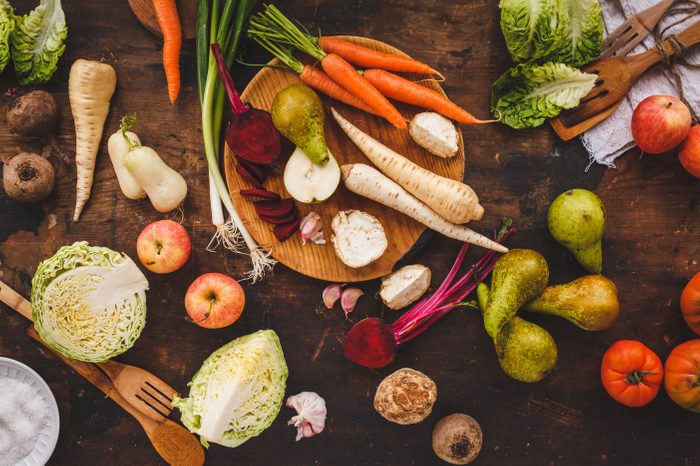
What is a superfood anyway?
“Fruits and vegetables are protective to health as they’re helpful at reducing the risk of coronary heart disease, stroke, and some cancers. They’re also low in calories, which helps prevent obesity,” says Isabel Maples, RDN, spokesperson for the Academy of Nutrition and Dietetics. While the term “superfood” doesn’t have an exact definition, Maples says dietitians would say it means nutrient-packed—and lots of fall produce fits that description. You could also count these foods as functional, she says, meaning there’s science behind the fact that they’re better for your body, offering vitamins, minerals, fibre, and antioxidants.
“In addition, if the food you eat is flavourful and satisfying, there is a good chance you will eat less and consume fewer calories, too,” she adds. And that’s the key to dropping pounds. Check out this list of fall superfoods for weight loss so you know what to turn to when you want a satisfying dish featuring new flavours, with few calories and plenty of nutrients.
Watch out for the signs you’re not eating enough vegetables.
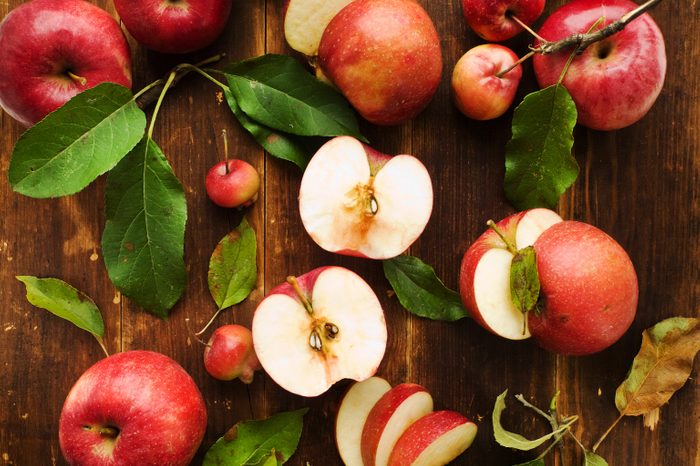
Apples
This fall fruit staple gets a good rep for a reason: it contains copious amounts of fibre, the nutrient that keeps you full and helps with healthy digestion. You also get antioxidants and a compound called quercetin that fights cancer cells, says Maples.
Learn more health benefits of apples.
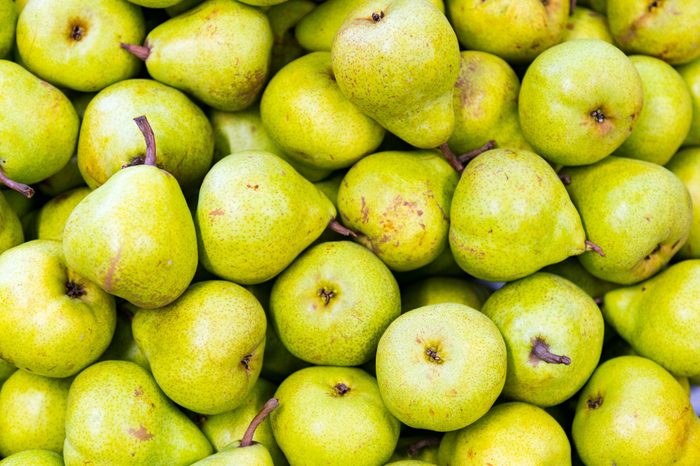
Pears
“For starters, pears are an excellent source of fibre; just one contains one-quarter of our daily fibre needs,” says Maples. Also, people who eat anthocyanin-rich foods, like pears, have a lower risk of developing diabetes, according to a Harvard study of nearly 200,000 men and women. Check the neck of a pear to pick a ripe one—you’ll know it’s good if it has just a little pressure, Maples says.
Consider trying these tricks to keep fruits and vegetables fresh longer.
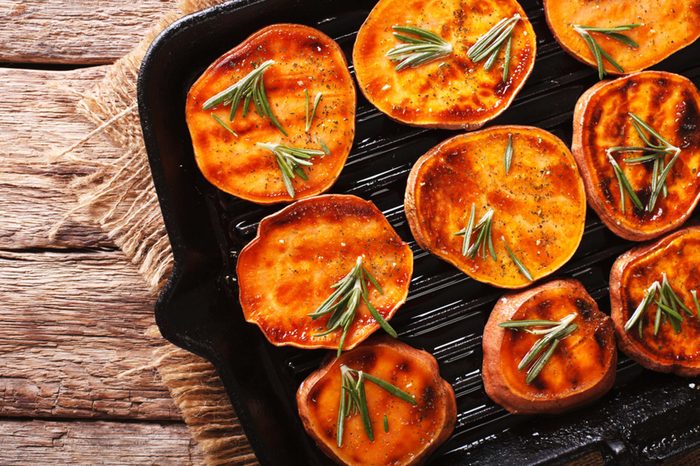
Sweet potatoes
A good source of vitamin A and iron, sweet potatoes also fight inflammation that can lead to chronic disease. Maples says to eat the skin to maximize your fibre intake. Eat them (skin and all) after roasting and adding to a salad, grain bowl, or as a side.
Discover the secret ingredient that totally transforms sweet potatoes!
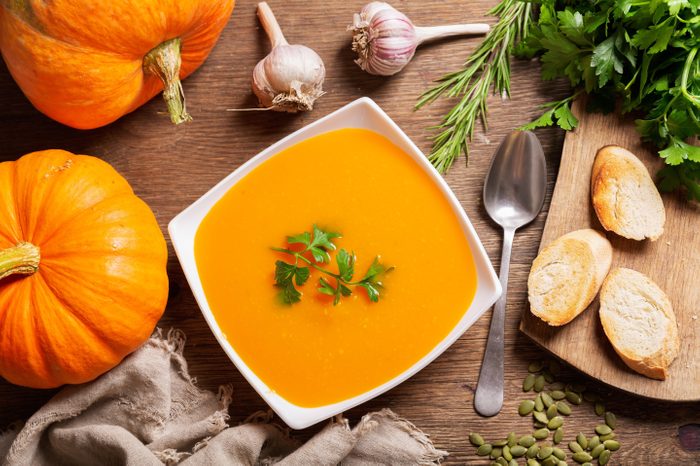
Pumpkin
Of course, you’ll see pumpkin everything come fall, but make sure you’re getting the real thing (pumpkin spice products not included). The fresh produce itself is where you’ll find filling fibre, plus beta-carotene. Try pumpkins roasted, puréed, canned, or fresh. And then add a little cinnamon for sweetness or curry for savoury.
Check out the fruits and vegetables you shouldn’t peel.
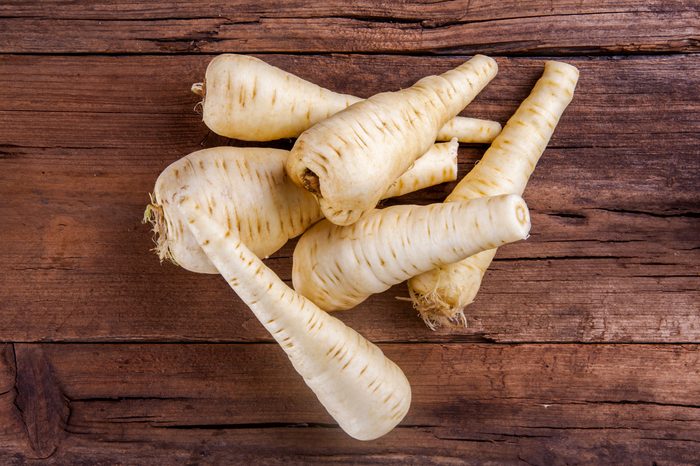
Parsnips
“Carrot’s cousin, only white and a little sweeter,” says Maples. In just one serving of this crunchy root veggie, you get four grams of fibre, plus vitamin C and copper. Reach for it when you need a snappy snack.
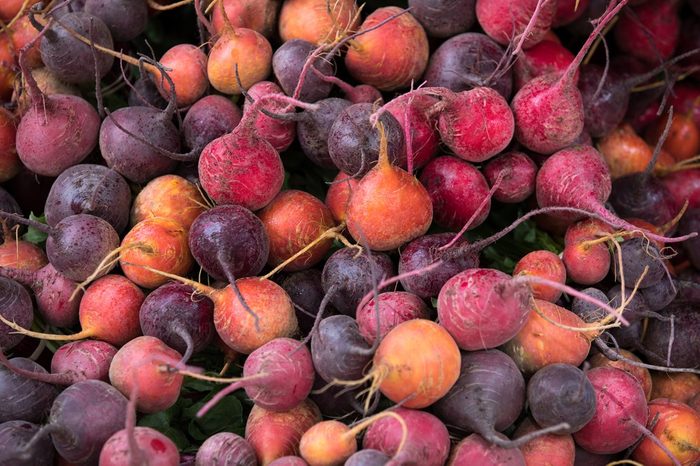
Beets
We’re talking about the entire veggie, from the root (roast it) to the green leaves (sauté them). The nitrates that naturally occur in beets can lower blood pressure and help you recover from a workout so you can sweat it out again the next day, says Maples. You might see runners sipping beet juice after chasing many miles, as one study found it can stave off exhaustion.
Here are the health benefits of beets you didn’t know about.
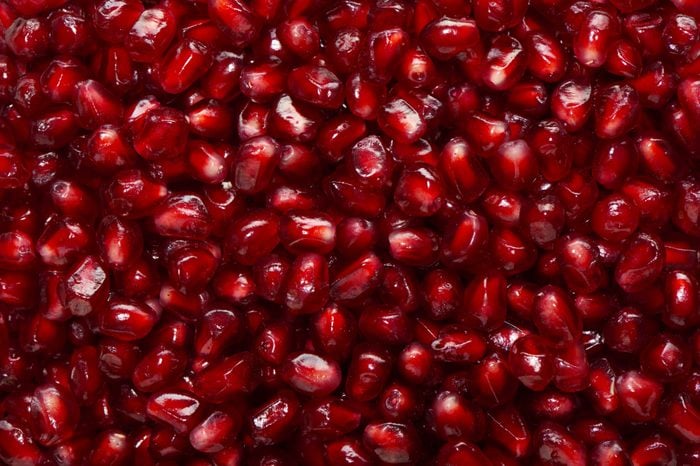
Pomegranate
This juicy fruit is high in polyphenols that protect cells from free radicals, while also offering folate and vitamin C. Studies show the seeds or arils can help control blood pressure and offer better muscle recovery post-workout.
Do your heart a favour by eating these foods that lower blood pressure.
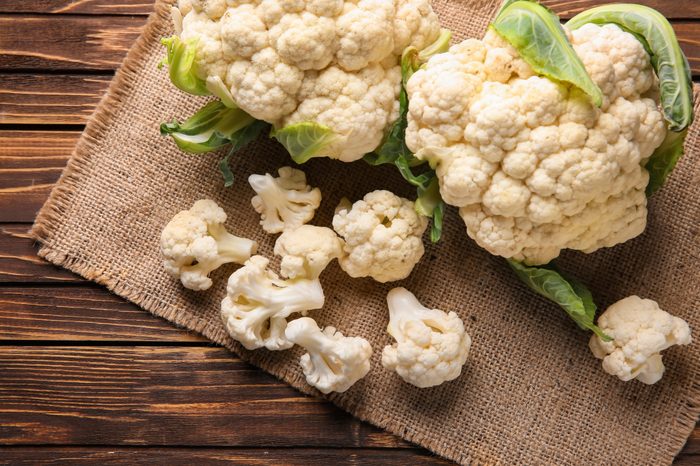
Cauliflower
Packed with lots of fibre and few calories, make this your pick when you want to shed pounds. In one cup of florets, you get 100 per cent of your vitamin C for the day too, as well as vitamins A and B6, and potassium, says Maples.
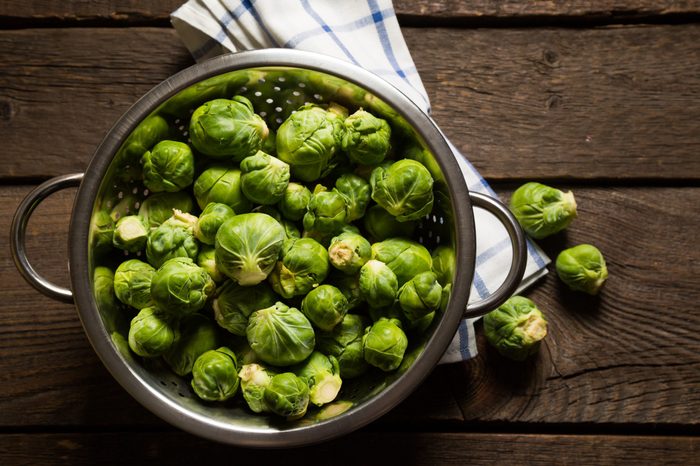
Brussels sprouts
“Brussels sprouts are proud members of the cabbage family. They are rich in antioxidants that help fight cancer and they provide fibre and a wealth of vitamins including vitamin C to help boost immunity, plus vitamin K to help promote bone health and blood clotting,” says Bonnie Taub-Dix, RDN, creator of BetterThanDieting.com, author of Read It Before You Eat It: Taking You from Label to Table. She suggests making them extra satisfying by roasting them with a drizzle of honey or maple syrup.
Avoid these frozen foods at all costs—and learn what to eat instead.
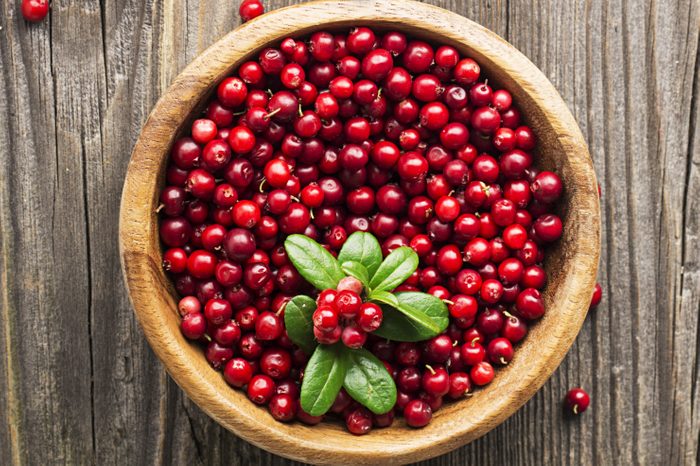
Cranberries
Cut back on the sugar added to dried cranberries by going for the fresh version (in season in the fall), and adding them to your salads or oatmeal. Fresh cranberries contain a compound called proanthocyanidin, which prevents harmful bacteria from clinging to the bladder wall and causing infection, says Maples.
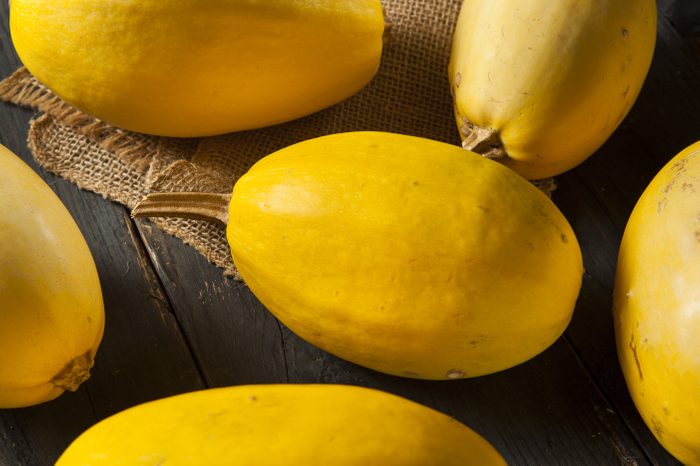
Spaghetti squash
“These days with so many people looking to cut carbs, spaghetti squash is a perfect choice for providing that pasta-like feel with fewer carbs and lots of nutrients,” says Taub-Dix. With each serving, you get fibre, vitamin C, manganese, and vitamin B6 and it contains just 42 calories per cup.
Get the recipe for roasted squash and garlic soup!
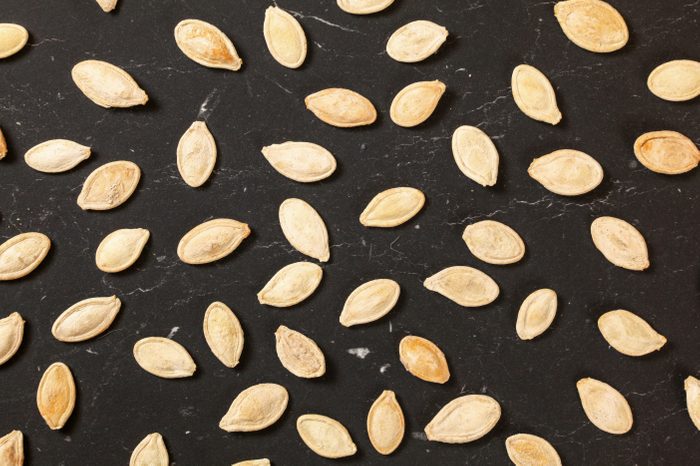
Pumpkin seeds
After you use your pumpkin, save the seeds, also known as pepitas. Toast them up in the oven and eat as a snack or a topping for your salad, soup, or oatmeal. You’ll get a valuable source of fibre, phosphorous, manganese, and iron, says Taub-Dix.
Use these tips to get the most out of farmers’ markets year-round.
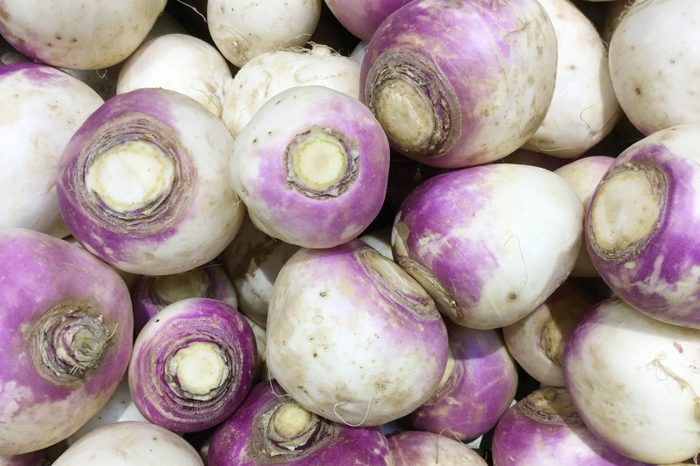
Rutabaga
A cross between turnips and cabbage, Maples says these offer a delicious earthy flavour, especially when roasted or pureed in a soup. Like other root veggies, rutabaga leaves you with that satisfied feeling because of their hearty taste and fibre-rich nutrition profile.
If you’re not a fan of these foods, there’s still plenty for you to eat! Add these other amazing fall superfoods to your shopping list.